The Desert Camping Survival Guide: Mastering Scorching Days and Frigid Nights
Ever wondered how to camp in a desert without melting or freezing? I’ve got you covered.
Choosing Your Oasis: The Art of Campsite Selection
Picture this: You’re standing in the middle of a vast desert, squinting against the relentless sun. Where do you pitch your tent? The answer might surprise you.
Natural shade is your best friend in the desert. Look for large trees or boulders that can shield you from the sun’s wrath. I once camped at the base of a massive red rock formation in Utah, and let me tell you, it was a game-changer. The temperature difference between the shaded area and the exposed desert floor was staggering.
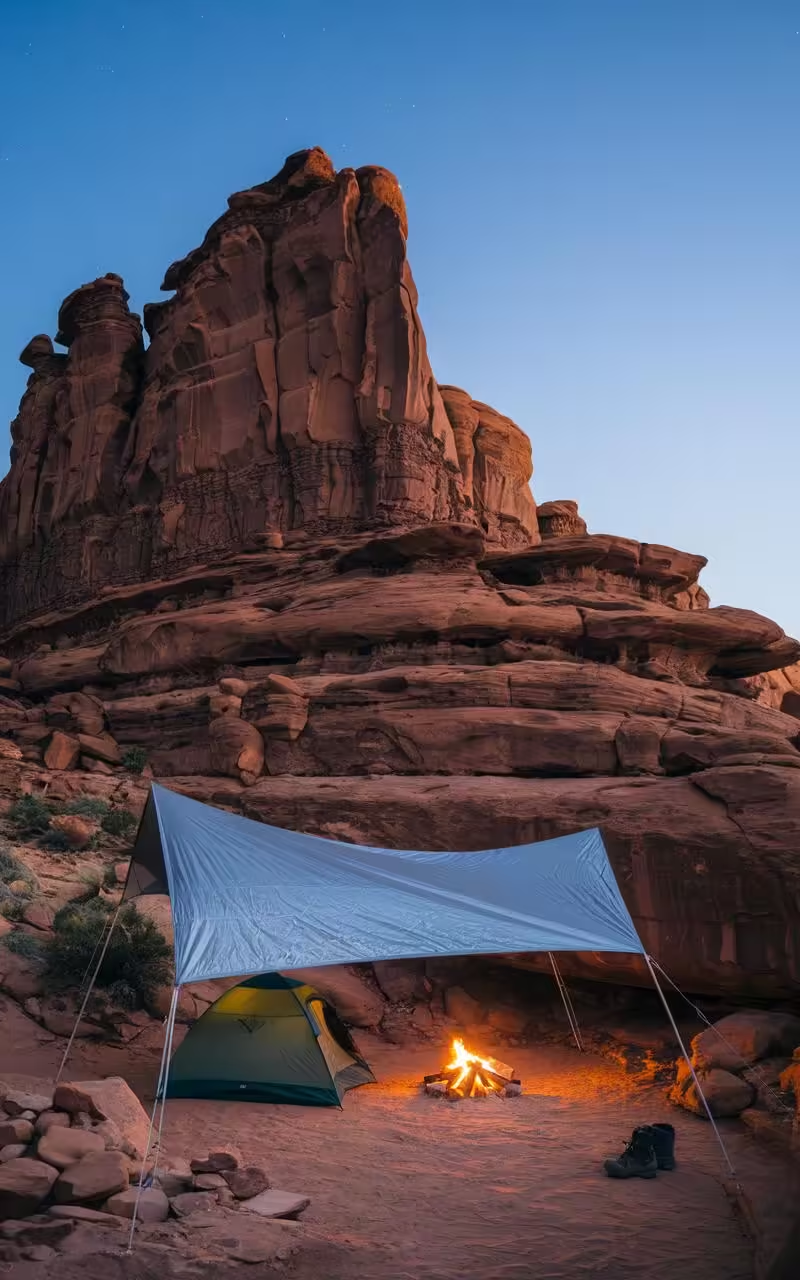
But here’s a pro tip: if you can’t find natural shade, create your own. Bring along a silver tarp and set it up over your tent. The reflective surface will bounce back the sun’s rays, keeping your sleeping quarters cooler.
Elevation is another key factor. Higher ground means cooler temperatures. If possible, set up camp on a hill or ridge. You’ll thank me when you’re enjoying a cool breeze while others are sweltering in the valley below.
Gear Up or Get Roasted: Essential Equipment for Desert Survival
Let’s talk gear. Your typical camping setup won’t cut it in the desert. You need specialized equipment to handle the extreme conditions.
First on the list: cooling equipment. A battery-operated fan can be a lifesaver in a stuffy tent. Personal misting fans are also worth their weight in gold. I once brought a small, rechargeable misting fan on a trip to Death Valley, and it was the envy of our entire camping group.

Insulated coolers are non-negotiable. Opt for high-quality coolers that can keep ice frozen for days. Pre-chill your cooler before the trip and pack it efficiently with block ice at the bottom and cubed ice on top. This strategy kept our drinks cold for nearly a week during a scorching summer trip to the Mojave Desert.
Beat the Heat: Staying Cool When the Sun’s Showing No Mercy
Hydration is your first line of defense against the desert heat. Drink water constantly, even if you don’t feel thirsty. Aim for at least a gallon a day. Avoid diuretics like caffeine and alcohol, which can dehydrate you faster than you can say “mirage.”
Keep your drinks ice-cold with insulated bottles. A study by the University of Montana found that cold water is absorbed faster by the body, making it more effective for hydration in extreme heat.
Cooling techniques can make or break your desert camping experience. Cooling towels, bandanas, and neck wraps are your secret weapons. Soak them in water, wring them out, and drape them over your neck or shoulders. The evaporation will cool you down quickly.
Here’s a DIY cooling spray that works wonders: mix a few drops of peppermint, rosemary, and lavender essential oils with ice-cold water in a spray bottle. Mist yourself for an instant cooling effect. Trust me, it’s like magic.
Activities: Making the Most of the Desert Without Melting
Early morning hikes are the way to go. Start before sunrise to enjoy the cooler temperatures and stunning desert landscapes bathed in the soft morning light. A study published in the Journal of Thermal Biology found that hikers who started their treks before 7 am experienced significantly less heat stress than those who started later.
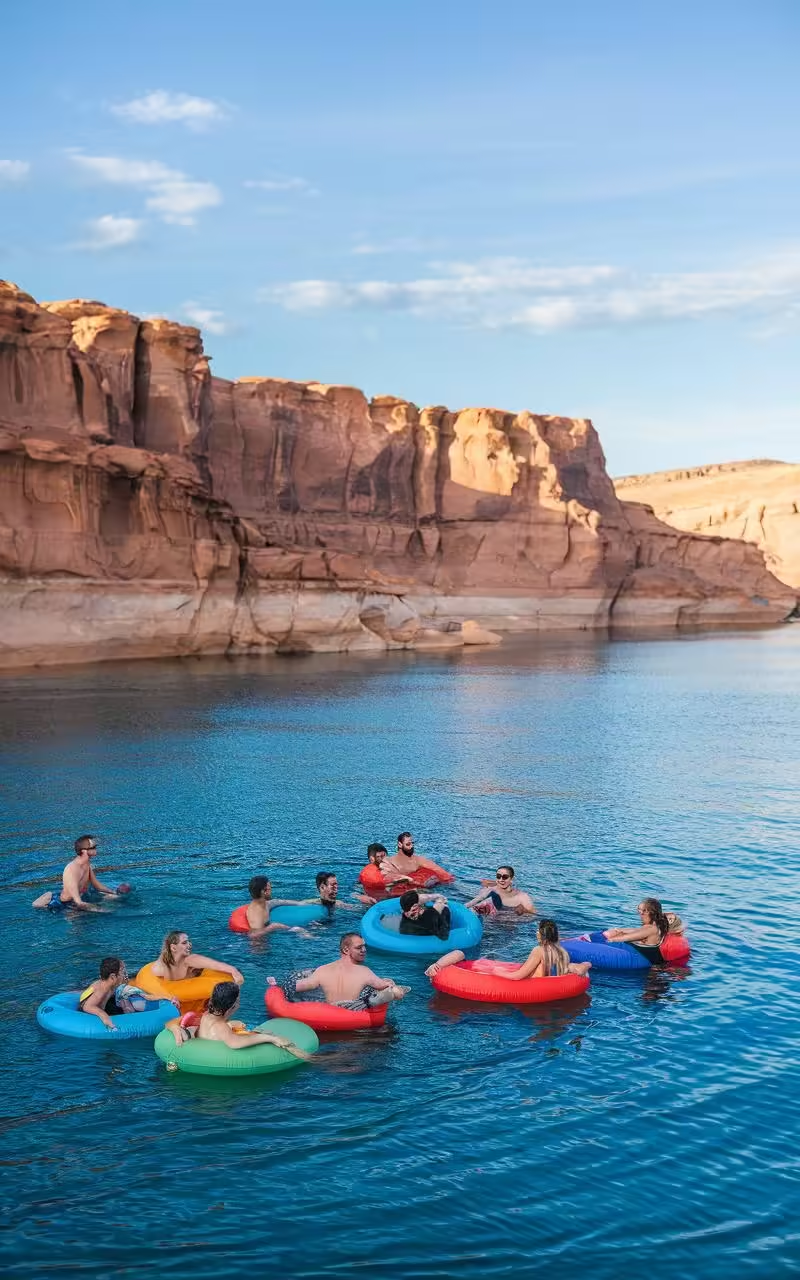
If you’re lucky enough to camp near water, take full advantage. Swimming, kayaking, or even just wading can help you stay cool during the hottest parts of the day. During a trip to Lake Powell, we spent our afternoons floating in the cool water, watching the desert landscape shimmer in the heat around us.
Key takeaway: Plan your activities around the desert’s natural rhythm. Early mornings and late evenings are your golden hours for outdoor adventures.
When Night Falls: Managing the Desert’s Jekyll and Hyde Temperature Swings
As the sun sets, the desert transforms from a scorching oven to a surprisingly chilly environment. Here’s how to handle it:
Ditch the heavy sleeping bag. Instead, opt for lightweight, breathable bedding. Cotton sheets or light linens are perfect for layering as the temperature drops.
Consider alternative sleeping arrangements. Hammock camping or cowboy camping (sleeping under the stars) can provide better airflow. Just be sure to use insect repellent if you’re sleeping out in the open.
Here’s a personal tip: skip the rainfly on your tent if the weather permits. This allows for maximum air circulation and gives you a stunning view of the star-filled desert sky.
Hungry in the Heat: Desert-Friendly Meal Planning
When it’s too hot to even think about cooking, cold meals are your best bet. Prepare refreshing salads, gazpacho, or tabbouleh ahead of time. These no-cook options will keep you cool and satisfied.
If you must cook, use a camp stove instead of a campfire. It generates less heat and won’t add to the already sweltering environment. And here’s a fun twist on a camping classic: try fire-free s’mores using pre-made graham cracker sandwiches with chocolate and marshmallow spread. They’re just as delicious and won’t turn your campsite into a sauna.
Remember, the key to successful desert camping is adaptation. Embrace the unique challenges and beauty of the environment, stay prepared, and you’ll create unforgettable memories under those vast, starry skies.
Wildlife Encounters: Respecting the Desert’s Inhabitants
Desert ecosystems are home to a diverse array of wildlife, from nimble lizards to elusive coyotes.
While fascinating, these creatures can pose challenges for campers. Always keep food sealed in airtight containers and store them in your vehicle or bear-resistant containers. I once had a curious kit fox raid our campsite in Joshua Tree, making off with an entire bag of trail mix!
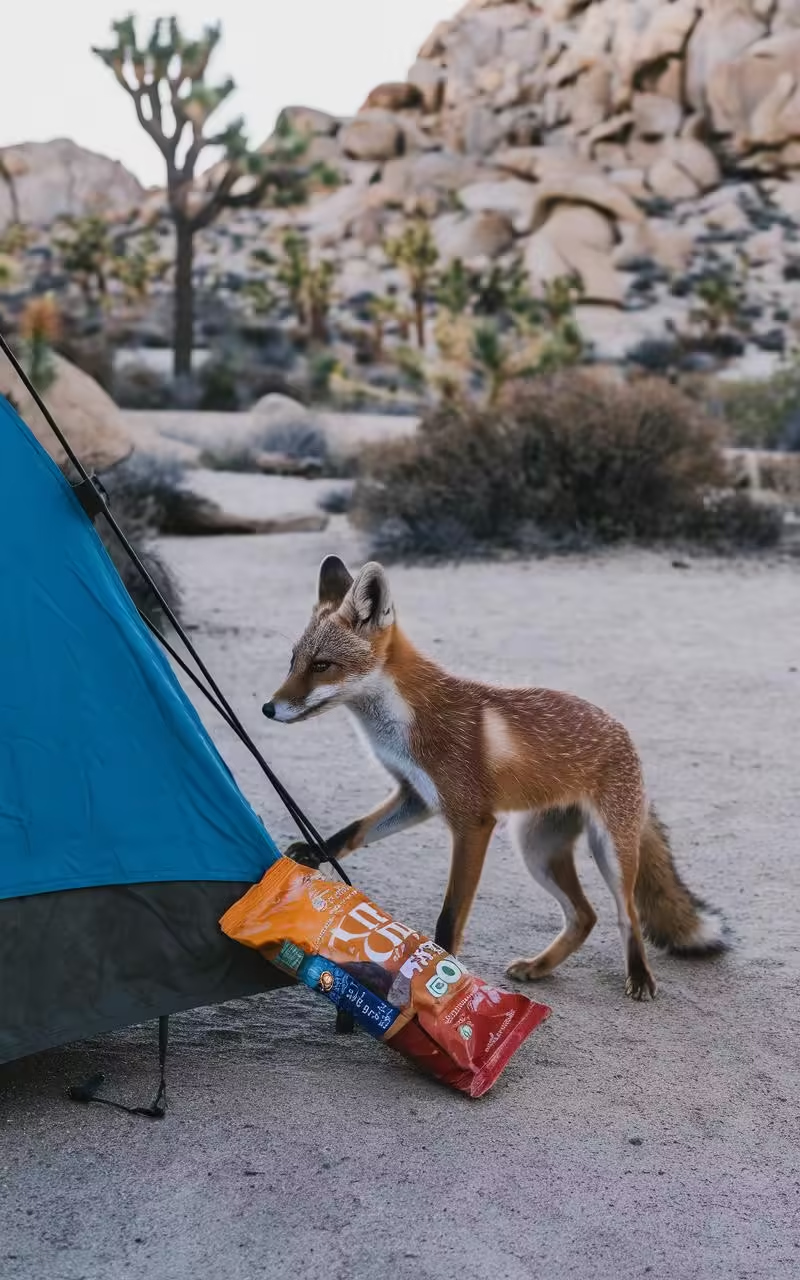
Be especially vigilant at dawn and dusk, when many desert animals are most active. Carry a headlamp or flashlight for nighttime trips to the bathroom to avoid surprise encounters.
Key takeaway: Respect wildlife by maintaining a clean campsite and giving animals plenty of space.
The Art of Desert Navigation: Don’t Become a Cautionary Tale
Getting lost in the desert can quickly turn dangerous.
Always carry a physical map and compass, even if you have GPS devices. Learn to read topographic maps and identify landmarks before your trip.
During a backpacking trip in the Anza-Borrego Desert, our GPS failed, but our map reading skills saved the day. Use the sun and stars for basic direction-finding if all else fails.
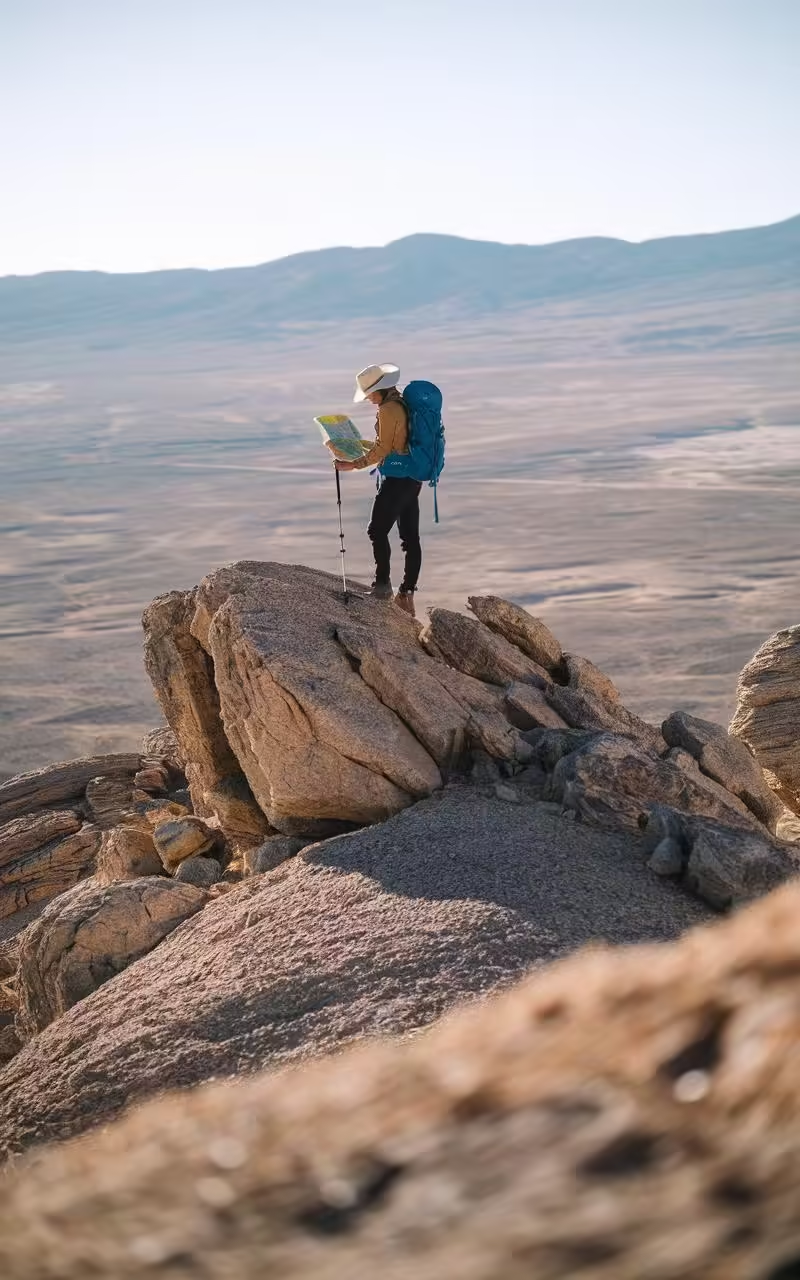
Leave a detailed itinerary with someone back home, including your expected return date. Consider carrying a personal locator beacon for emergencies in remote areas.
Key takeaway: Preparation and multiple navigation tools are your best defense against disorientation.
Desert First Aid: Handling Heat-Related Emergencies
Heat exhaustion and heatstroke are serious risks in desert environments.
Learn to recognize the symptoms: dizziness, headache, nausea, and rapid heartbeat for heat exhaustion; confusion, seizures, and loss of consciousness for heatstroke.
Immediately move the affected person to shade and cool them with water and damp cloths. I once helped treat a fellow hiker for heat exhaustion in the Grand Canyon. Quick action prevented a potentially dangerous situation.
Pack a comprehensive first aid kit, including electrolyte replacements and burn gel for sunburns. Know how to treat common desert injuries like cactus spine removal and scorpion stings. Consider taking a wilderness first aid course before your trip.
Key takeaway: Being prepared to handle heat-related emergencies can be lifesaving in the desert.
Leave No Trace: Preserving the Desert’s Delicate Ecosystem
Desert environments are surprisingly fragile and slow to recover from human impact.
Always pack out what you pack in, including biodegradable items like fruit peels. Use established campsites and trails to minimize damage to desert plant life.
In areas without designated bathrooms, use a trowel to bury human waste at least 6 inches deep and 200 feet from water sources. Avoid disturbing cryptobiotic soil crusts, which are vital to desert ecology.
Resist the urge to collect “souvenirs” like rocks or plant specimens. Use a camp stove instead of gathering firewood, which can take decades to replenish in arid environments.
Key takeaway: Practice responsible camping to preserve these unique landscapes for future generations.

Embracing the Desert’s Magic: Beyond Survival to Appreciation
As challenging as desert camping can be, it also offers unparalleled beauty and serenity.
Take time to appreciate the unique flora and fauna, from towering saguaro cacti to delicate desert wildflowers. Stargaze on clear nights – many deserts offer some of the darkest skies in the world. During a trip to the Atacama Desert in Chile, I witnessed a night sky so brilliant it seemed unreal.
Listen for the subtle sounds of the desert: the rustle of wind through canyon walls, the distant yip of coyotes. Consider bringing a field guide to identify desert plants and animals, deepening your connection to the environment.
Wake up early to catch a desert sunrise – the play of light on the landscape is truly magical.
Key takeaway: By embracing the desert’s unique charms, you’ll transform a challenging trip into an unforgettable adventure.

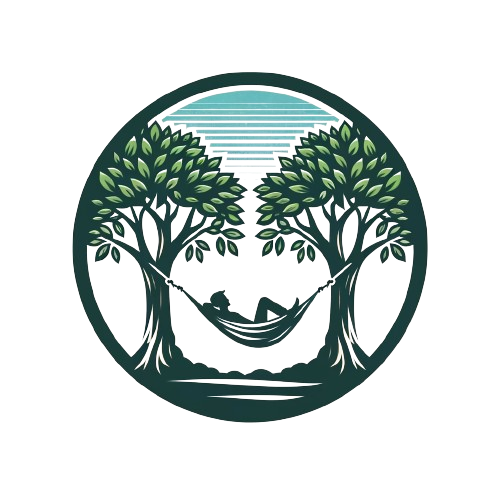
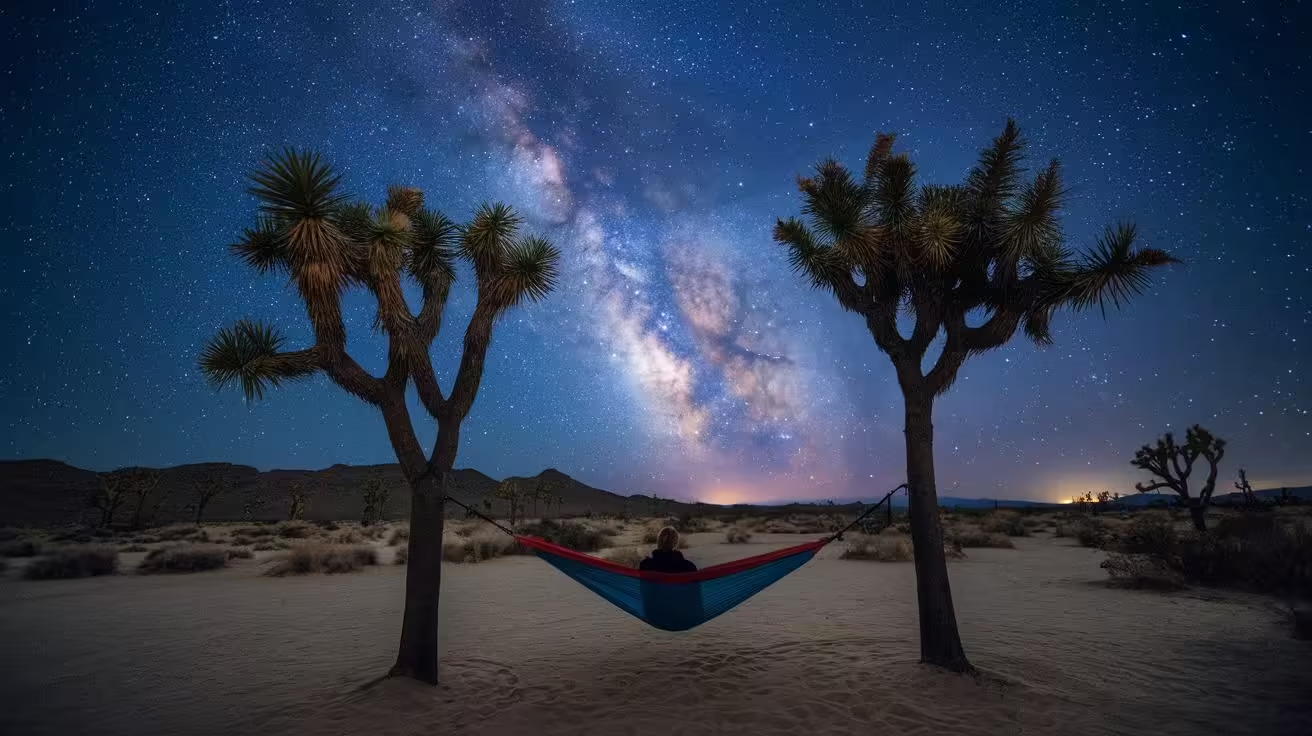

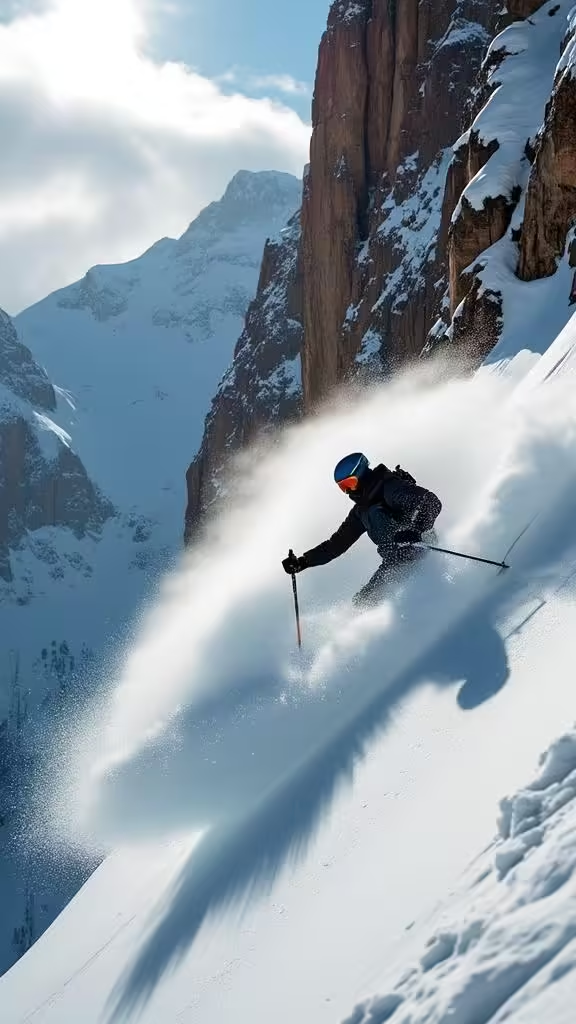
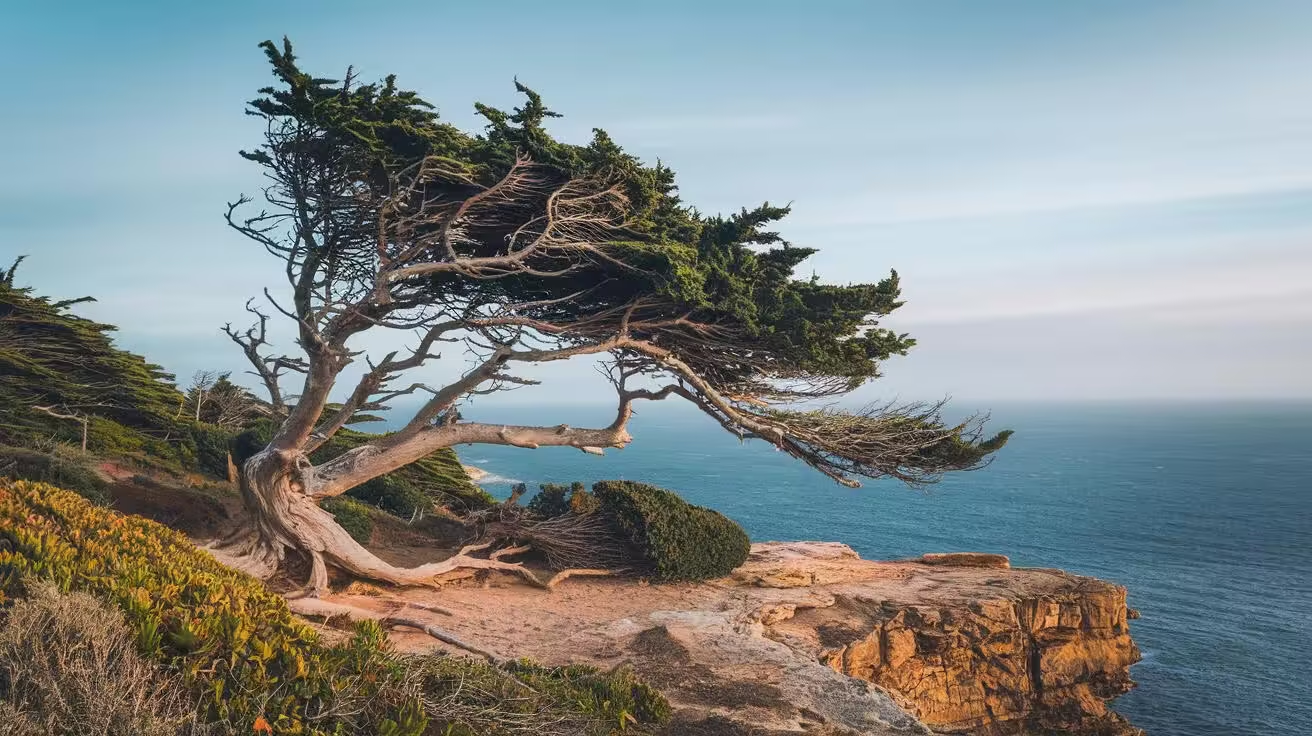
Leave a Reply